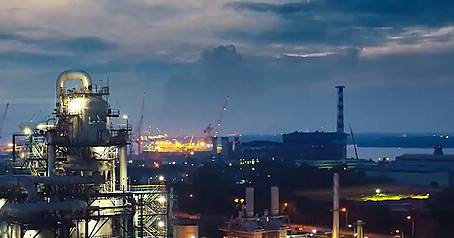Sep . 10, 2024 22:15 Back to list
silencing check valve
Understanding Silencing Check Valves Function, Importance, and Applications
In various industrial applications, fluid control and management are critical for efficiency and safety. One essential component in these systems is the silencing check valve. This type of valve plays an integral role in controlling the flow of fluids and preventing backflow, while also minimizing noise, making it a valuable asset in multiple applications.
What is a Silencing Check Valve?
A silencing check valve is a type of valve designed to allow fluid to flow in one direction while preventing backflow. The 'check' in its name refers to its primary function of checking or stopping the reverse flow of the fluid. The differentiation lies in the 'silencing' feature, which incorporates mechanisms to dampen the noise typically associated with fluid flow and the operation of traditional check valves. This is especially important in systems where noise control is paramount, such as in residential plumbing, HVAC systems, and various manufacturing processes.
How Does It Work?
Silencing check valves operate using a combination of gravity and pressure differentials. When fluid moves through the valve in the correct direction, a movable disk or flap opens to allow flow. When the fluid tries to flow in the reverse direction, the flap closes, creating a seal that prevents backflow. The silencing feature often includes specialized materials or design elements, such as hydraulic dampers or cushioning mechanisms, that absorb energy and reduce noise caused by the sudden closure of the valve.
Importance of Silencing Check Valves
silencing check valve

1. Noise Reduction One of the primary benefits of silencing check valves is their ability to significantly reduce noise levels. This is particularly valuable in environments where excessive noise can lead to disturbances or regulatory issues. 2. System Protection By preventing backflow, these valves help protect pumps and other system components from damage. Backflow can lead to pressure surges, mechanical failures, and increased maintenance costs.
3. Improved Efficiency With effective backflow prevention, silencing check valves contribute to the overall efficiency of fluid systems. They facilitate smoother fluid transitions, leading to better energy consumption and performance.
4. Versatile Applications These valves find applications in various industries, including water treatment, chemical processing, marine engineering, and HVAC systems. Their ability to operate under varying pressures and temperatures makes them adaptable to a wide range of conditions.
Installation and Maintenance
Proper installation of silencing check valves is crucial for optimal performance. They should be oriented according to manufacturer specifications to ensure that the flow direction aligns with the design of the valve. Regular maintenance checks are also recommended to ensure the closure mechanism functions correctly and to prevent any potential blockages.
Conclusion
Silencing check valves are an essential component in modern fluid systems, offering significant advantages in noise reduction, system protection, and efficiency. Their unique design not only prevents backflow but also mitigates the loud noises typically associated with traditional valves. In sectors where both functionality and noise control are priorities, these valves stand out as a practical solution. As industries continue to seek ways to improve their operations while adhering to environmental and safety standards, silencing check valves will undoubtedly remain a vital part of fluid management technology.
-
Thread Plug Gauge Our Promise of Measurement ExcellenceNewsAug.22,2025
-
Gauge Pin Class Reflecting Quality LegacyNewsAug.22,2025
-
Check Valve Types for High Rise BuildingsNewsAug.22,2025
-
Water Control Valve for Irrigation SystemsNewsAug.22,2025
-
Gate Valve with Soft Seal TechnologyNewsAug.22,2025
-
Y Type Strainer for Oil and Gas ApplicationsNewsAug.22,2025
Related PRODUCTS









